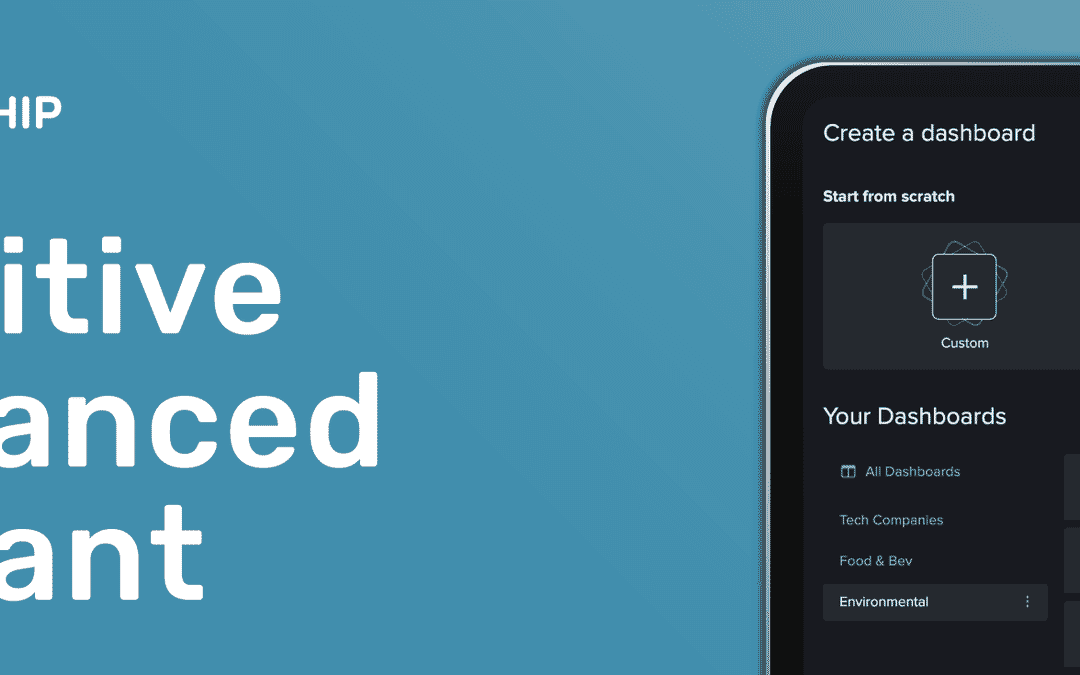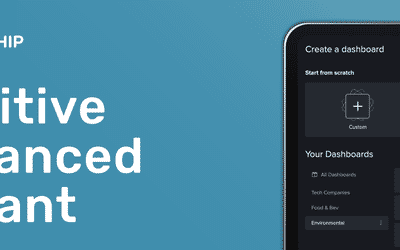A picture is worth 1000 words, but sometimes, a few more words can help. We look at the caption trends of 30+ publishers on Instagram.
On social, you can catch your audience’s eyes with a great photo or video, but how do you hold their attention and push it a step forward? A well-written and clever caption can do the trick.
On Instagram, captions not only can add context, but they can build a deeper connection with the content, and even encourage more engagement. We previously looked at Instagram caption trends last summer.
We wanted to take another look and see what trends we can identify within the top captions themselves. Using NewsWhip Analytics, we looked at top content from publishers and brands for Q1 2018.
1. Use captions to tell the story
There was an interesting trend in our data. When we looked at how word counts have changed between Q1 2018 and our last analysis in July 2017, we saw that the divide between viral publishers and news publishers has widened.
The viral publishers we looked at have decreased the number of words and emoji used in captions, while for news publishers, their wordcount has increased. Below is an example of a few of the publishers and their change.
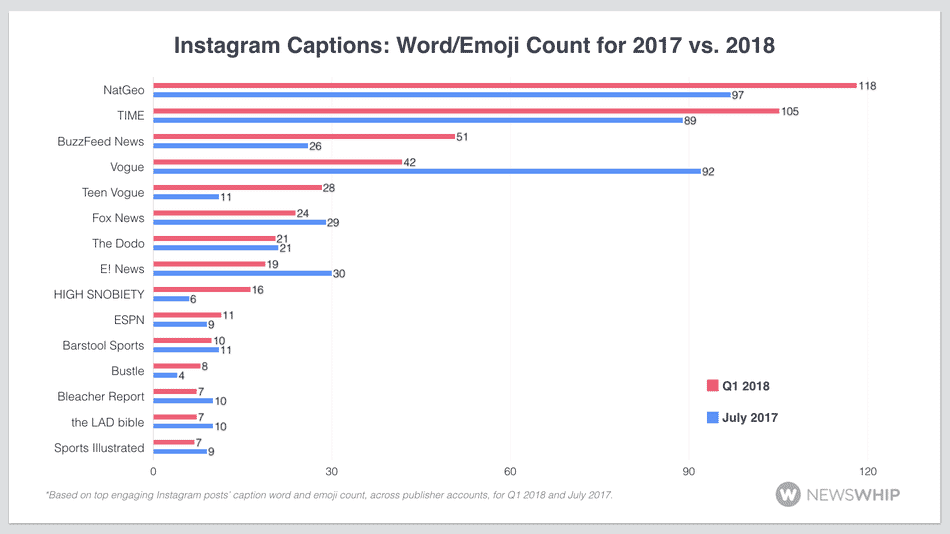
The publisher that had the wordiest captions was the New York Times, at an average of 159 words across its top 15 posts. The below post clocked in at 215.

For these publishers, the caption is being used to tell the story behind the photo, piquing followers’ curiosity further.
2. Add emoji
Emoji, or modern day hieroglyphics, are becoming more ubiquitous on Instagram, even among old-school publishers. We’ve noted even the like of the Financial Times experimenting with emoji in Instagram posts, which we explored here.
There are a few ways we see emoji being used to enhance captions:
A. Suggest an emotional reaction. In our analyses, the top used emoji are almost always reactionary emojis and heart emojis. We’ve already seen that emotionally-charged content tends to drive more shares, so it makes sense to use emoji here too.

B. Shorthand for other words. Emoji can be used to add more context or stand in for certain words. We often see publishers using the camera emoji to give credit to the photographer, but others use emoji for other words or to illustrate certain elements.
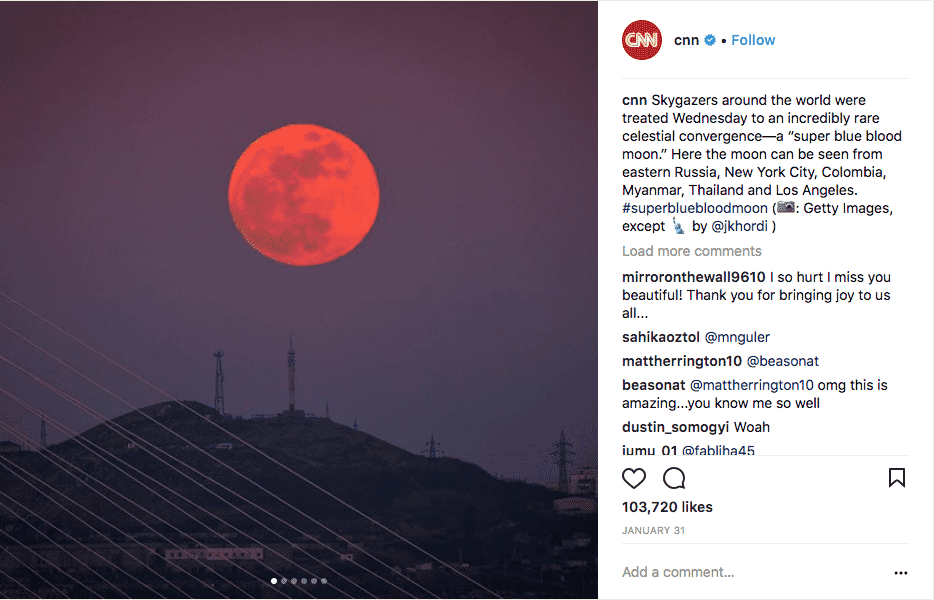
We’ve also seen emoji being used to gameify content — asking users to use an emoji to vote on a question. This tactic is more common on Facebook, where users can respond with a certain reaction.
We usually see sports publishers and teams doing this.
3. Emphasize a point
Captions are also frequently used to emphasize the point being made by the post, or to frame it in a certain way. The caption can help contextualize a photo, which can help ensure that a post is interpreted as intended.
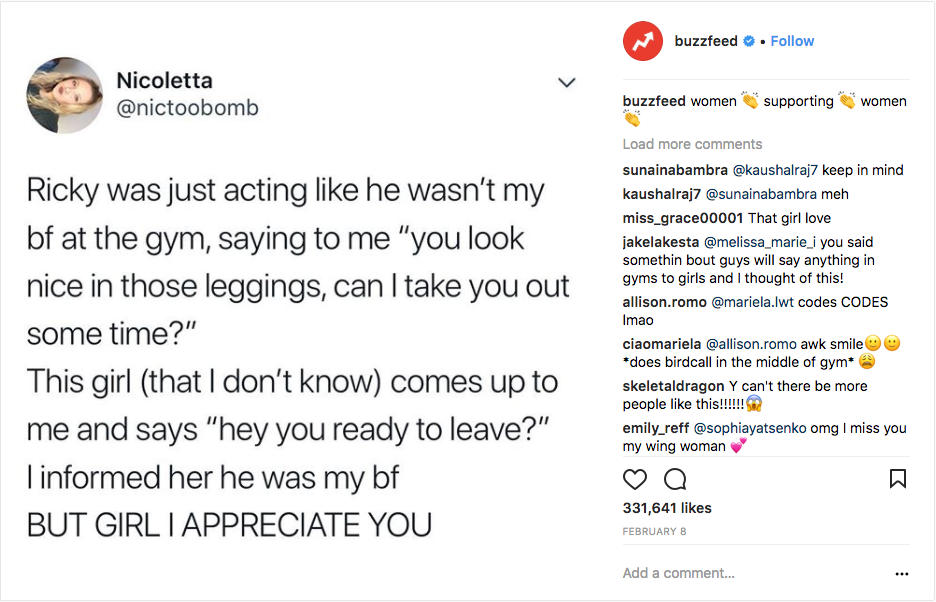
This caption from BuzzFeed barely has any words, but when paired with the right emoji, it emphasizes the message of the content.
4. Create a brand voice
Publishers can also be a bit more playful on Instagram, using the platform to establish their brand voice. We see several publishers commentating on the content that they post.
Below, Vogue is playful but on-brand.

Such captions can help establish a deeper connection with your followers. You can come across as a source of authority, entertainment, inspiration, or delight.

There’s a definite pay-off when you deliver the content that your audience finds value in. We can see from the comments on Baller Alert’s video that the post resonated with followers.
5. Humanize your content
We also see top publishers using captions to give a voice to the subject of their photo and video posts. By using quotes, we can hear what’s going on in front of the camera, or behind it.
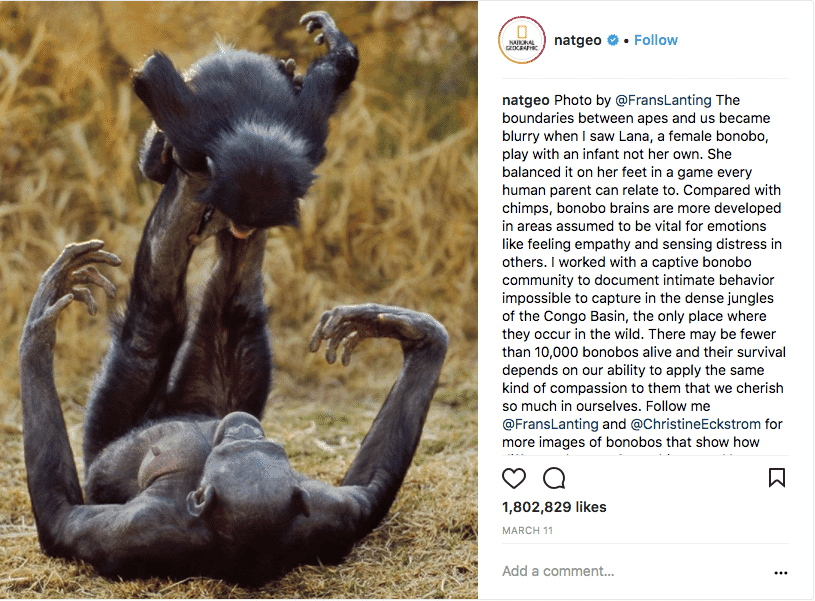
Using quotes allows publishers to humanize content. National Geographic will frequently have its photographers share their thoughts about the photos posted.
These direct quotes can be quite impactful, especially given the success of such acclaimed accounts as Humans of New York.

Publishers can further link to those in the captions using ‘mentions’. Across the 30+ publishers, we saw an average of one mention per post. The New York Times and National Geographic had the most mentions, an average of four per post.
Mentions can also be used to bring users into the dialogue around a post, and spur user-generated content contributions.
6. Bring in the community
Beyond mentions, publishers can also bring in the community by using hashtags. Hashtags make content more discoverable for those specifically interested in what you’re posting.
Across the publishers, we saw an average of one hashtag per post. Eight publishers didn’t use hashtags in their top content, while ten had an average of two or more hashtags per post. The publisher with the most hashtags was BBC News, with an average of seven hashtags per post.

Below are the most frequently occurring hashtags of the publishers that we analyzed, again just for the Q1 2018 period. We can see events like the Golden Globes, the Grammys, and March for Our Lives all featured.
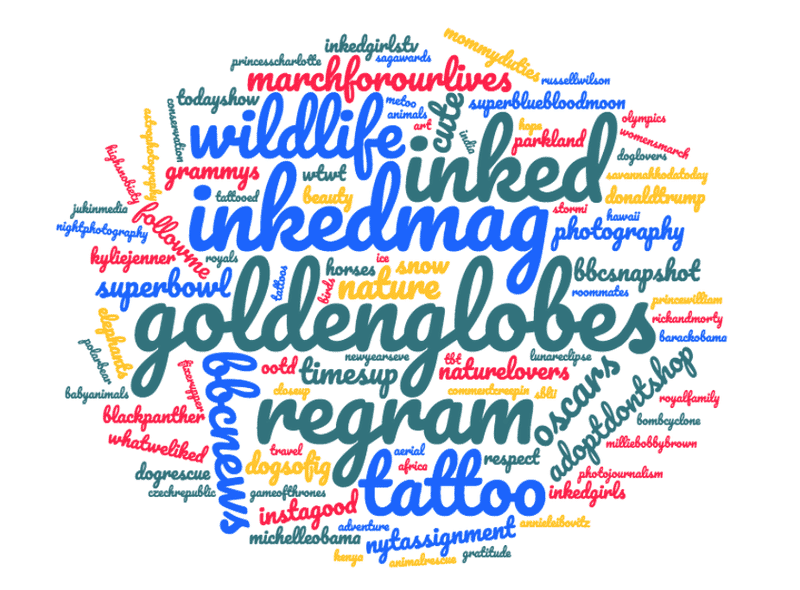
Some publishers label themselves by using the same hashtag over and over again, making it easy to find their content specifically. Or they use a hashtag for a specific campaign.
How to kickstart your Instagram caption strategy
To discover winning Instagram strategies, one must be an active consumer of media, vs. a passive one. There are a few steps you can take to create guidelines for your captions.
- Understand your own content — which captions seem to get users commenting and liking more?
- Understand the reach of your brand on Instagram — where are you mentioned, and how are you framed? How does that content perform?
- What’s your brand voice? Are you going for playful, informative, inspiring, or something else?
- Mention other users who contributed or are in the content
- Use hashtags to optimize discoverability. Social media is more and more niche.
To explore social media trends that are winning the day, take a demo of NewsWhip Analytics.






